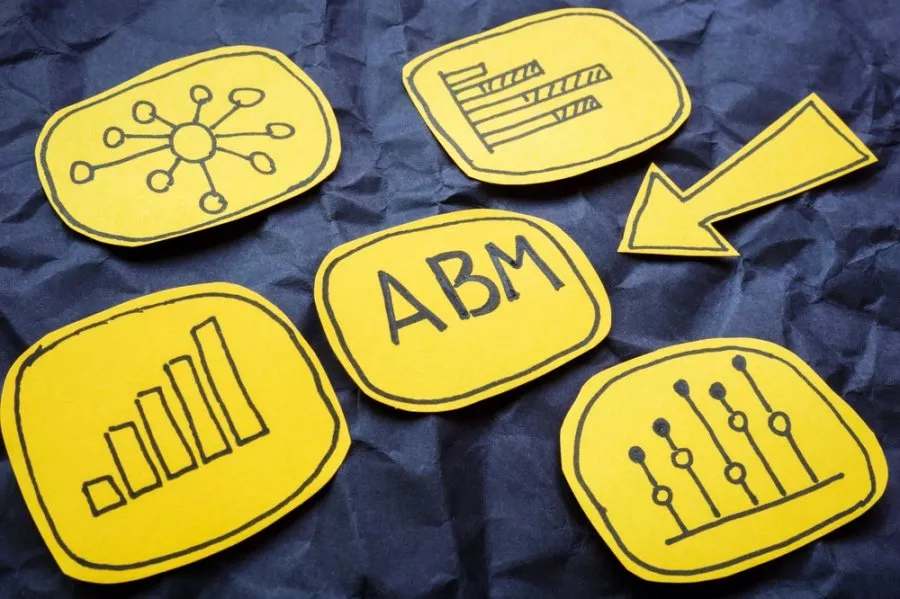
Some Do’s and Don’ts for the Best SaaS Content Marketing
Content marketing matters online but is never more essential than for software-as-a-service (SaaS) businesses. An effective SaaS marketing agency pours incredible resources into getting this technique right.
This article explores why. In particular, it discusses the following:
 Creating SaaS content is more complex than writing a how-to blog post and calling it a day. It is meticulous, time-consuming, and comprehensive. It adheres to branded marketing principles, which combine art and science.
Your business benefits more when it works with a competent SaaS marketing agency if you lack digital advertising experience. However, it also helps to learn the tried-and-tested techniques that these teams use.
Below are five SaaS content marketing dos with some brand examples. Learn from their strategies:
Creating SaaS content is more complex than writing a how-to blog post and calling it a day. It is meticulous, time-consuming, and comprehensive. It adheres to branded marketing principles, which combine art and science.
Your business benefits more when it works with a competent SaaS marketing agency if you lack digital advertising experience. However, it also helps to learn the tried-and-tested techniques that these teams use.
Below are five SaaS content marketing dos with some brand examples. Learn from their strategies:
 Along with the dos are the don’ts, which are usually costly in many ways. They are expensive to fix and often lead to missed growth or conversion opportunities.
Here are the three content marketing no-nos to avoid:
Along with the dos are the don’ts, which are usually costly in many ways. They are expensive to fix and often lead to missed growth or conversion opportunities.
Here are the three content marketing no-nos to avoid:
- How SaaS content marketing varies from that of other industries.
- Top five effective strategies that drive leads and conversions.
- Three biggest costly mistakes to avoid.
Want to know how we help SaaS businesses stand out from the crowd? Watch this video to learn how DAP makes it happen!
SaaS Content Marketing: How It Differs from That of Other Industries
The best content marketing plan fits the business well. It resonates with the audience and boosts the brand’s awareness and credibility. Most of all, it converts prospects into long-term customers and advocates. SaaS content marketing is great and different from others for the reasons below:- Buyer personas. SaaS buyers are usually more sophisticated and cautious. They conduct extensive research before subscribing to or purchasing a platform. It is also diverse, and sometimes customers differ from the users. An example of this is a chief technical officer (CTO) investing in a customer relationship management (CRM) system for its sales department.
- Long sales cycles. The SaaS marketing funnel is well-known for being long and complex, especially the consideration stage. One reason is the presence of many decision makers. These range from the actual users to managers, CTOs, and other C-suite executives.
- Thought leadership. Thought leadership content provides strategic advice and industry insights, making it highly effective for SaaS brands. Examples include ebooks, analyst research reports, blogs, and webinars. These types of copies build credibility and trust with buyers.
- Product-centric content. SaaS content also focuses on the product, besides thought leadership. Detailed feature articles, demo videos, case studies, and free trials help buyers understand software features. Best of all, they highlight the specific problems it solves.
- Lifecycle marketing. In SaaS, the initial sale is just the beginning. Content is key to onboarding, training, adoption, retention, and expansion. Lifecycle marketing educates customers on fully utilizing the product. It then increases its value over time through upsells and cross-sells.
Five SaaS Content Marketing Dos
 Creating SaaS content is more complex than writing a how-to blog post and calling it a day. It is meticulous, time-consuming, and comprehensive. It adheres to branded marketing principles, which combine art and science.
Your business benefits more when it works with a competent SaaS marketing agency if you lack digital advertising experience. However, it also helps to learn the tried-and-tested techniques that these teams use.
Below are five SaaS content marketing dos with some brand examples. Learn from their strategies:
Creating SaaS content is more complex than writing a how-to blog post and calling it a day. It is meticulous, time-consuming, and comprehensive. It adheres to branded marketing principles, which combine art and science.
Your business benefits more when it works with a competent SaaS marketing agency if you lack digital advertising experience. However, it also helps to learn the tried-and-tested techniques that these teams use.
Below are five SaaS content marketing dos with some brand examples. Learn from their strategies:
1. Lead with Education
SaaS products often demand commitments regarding subscriptions, upgrades, and expansions. For this reason, most buyers take time to educate themselves. How does the platform work? Is it easy to use? How does it help me? Your content marketing strategy’s job is to make education accessible and engaging. Avoid heavy product pitches upfront. Instead, establish credibility by teaching first. One SaaS brand that does an excellent job of leading with education is HubSpot.- Its blog covers digital marketing, sales, customer service, and agency growth. The articles focus on teaching readers tactics and best practices before mentioning HubSpot’s products.
- The website includes an extensive library of ebooks, templates, and guides. These resources provide tactical advice on essential subjects, such as improving website conversions and email marketing.
- It offers free online courses through HubSpot Academy. This one teaches inbound marketing and sales methodology. In the process, it builds the brand as an industry leader.
- HubSpot employees regularly contribute guest columns to industry publications. They are also active on social media, particularly LinkedIn.
- It has free tools to help users with tasks. These include creating buyer personas and building quizzes.
2. Address Specific Pain Points
SaaS content resonates best when it focuses on the precise frustrations and pain points of its target buyers. To connect with buyers, take a granular approach. Suppose you are an HR SaaS organization. Which sounds better and more precise: “How to Improve Employee Wellness” or “7 Low-Morale Warning Signs to Watch For”? The second one is ideal to write. Relatable scenarios and examples help buyers think, “This brand gets me.” This content marketing technique is evident in Peloton’s The Output blog:- The site accurately categorizes its growing number of articles. For example, what are your health and wellness goals? Do you want to learn how to be active? How to recover from grueling training or level up your fitness journey? The primary menu options answer these questions.
- The blog contains a direct link to the machine’s app. This might attract busy individuals who still want to stay fit and healthy.
3. Simplify Complex Concepts
SaaS products often involve sophisticated technology, advanced workflow, and complex methodologies. This level of complexity makes it difficult for buyers to fully grasp concepts. Effective content finds ways to simplify it. The content breaks down complicated ideas into understandable components through frameworks. These include conceptual models structured with bullet points, charts, and visual flows. On the other hand, plain, concise writing avoids jargon and keeps sentences short. IKEA is masterful at taking complex furniture assembly and making it understandable for the average person.- Its instructions rely heavily on simple, clear diagrams and illustrations that walk users through each assembly step. Arrows demonstrate where each piece connects without lengthy written descriptions.
- It breaks down the assembly into bite-sized tasks. Each instruction manual focuses on one discrete step at a time rather than overwhelming users with everything at once.
- IKEA designs furniture that a person can assemble with an Allen wrench and only a few standard screw and fastener types. This consistency helps users quickly get familiar with the process.
4. Tell Stories
Storytelling is an extremely effective yet often overlooked SaaS content technique. It humanizes the brand, especially since most view such products as cold and technical. Further, they:- Simplify complex ideas into more tangible, memorable, and understandable narratives.
- Build trust when you allow users to describe their firsthand experience.
- Evoke emotions that drive engagement, sharing, and action.
5. Spotlight Customer Success
Today’s buyers are more skeptical than they have ever been. This mistrust stems from being constantly bombarded with promotional content trying to earn their business. SaaS brands could overcome this challenge by spotlighting customer success. Featuring the customer and telling their story helps prospective buyers see the product’s real-world value. Customer case studies, testimonials, and interviews validate your capabilities through outside voices. These often come across as far more authentic and objective. Salesforce, a CRM provider, is exemplary in spotlighting customer success. It:- Has a dedicated website section for customer reviews. These are detailed case studies that describe how different businesses have benefited from the products. The stories are searchable by industry and solution.
- Showcases live testimonials during Dreamforce conferences. These real-world examples demonstrate the practical applications and the transformational impact of the brand on businesses.
- Builds a community of “Trailblazers.” These are individuals who have transformed their careers and businesses with the product.
Three SaaS Content Marketing Don’ts
 Along with the dos are the don’ts, which are usually costly in many ways. They are expensive to fix and often lead to missed growth or conversion opportunities.
Here are the three content marketing no-nos to avoid:
Along with the dos are the don’ts, which are usually costly in many ways. They are expensive to fix and often lead to missed growth or conversion opportunities.
Here are the three content marketing no-nos to avoid:
1. Do Not Be Inconsistent
An inconsistent content strategy is like a dull sword. It scatters strength haphazardly without cutting through. Unfortunately, many SaaS businesses cover disjointed, random topics to rank in the search results or ride with the trends. Disconnected content dilutes your brand’s positioning and core messaging. Buyers become confused about what you stand for and what makes it unique. A good SaaS marketing agency practices good UX design to develop and publish copy that reinforces your brand across all elements. These include typography, visual or graphic design, tone, and vision. This alignment amplifies the impact and effectiveness over time. Airbnb provides a good example of maintaining consistency. Its brand positioning revolves around the “Belong Anywhere” concept. It then shows all over the site, whether a listing description, a travel story, or a social media post. The business offers unique travel experiences that make people feel like they are a part of the local community. Additionally, the content matches the sales funnel stages:- Awareness. The content is about inspiring travel and showcasing various available experiences. The blog posts feature unique homes and social media posts with stunning travel photography. They also include user-generated content highlighting the possibilities of different destinations.
- Consideration. Mid-funnel content helps potential guests imagine what staying with Airbnb would be like. This includes detailed listings with rich narratives, reviews from past guests, neighborhood guides, and articles about the local culture and activities that surround the listings.
- Decision. The content is more targeted and action oriented. It focuses on special offers, booking incentives, and reassurances, such as flexible cancellation policies and safety protocols. The site also provides travel planning tools and tips to help with the final decision-making process.
2. Do Not Ignore Mobile Optimization
Google studies show over half of website traffic now comes from mobile devices. The search engine has also recently completed mobile-first indexing. This means that the site’s mobile version directly influences rankings and search visibility. In other words, SaaS content cannot be an afterthought for desktop-focused efforts. Rather, it follows mobile optimization to strengthen the small-screen experience and align it with modern user behavior. How?- Present content in more modular, bite-sized chunks.
- Use easy-to-tap calls to action, simplified navigation, and ample negative space for quick mobile scanning.
- Make videos, graphics, and other media lightweight and quick loading to accommodate mobile data speeds.
- Adapt legible typography to avoid pinching and squinting on small displays.
3. Do Not Fail to Define the Product’s Clear Value
The worst thing any content can do is waste people’s time without giving them concrete utility or a lesson. Unfortunately, many SaaS and technology brands fall into this trap. They produce blogs, ebooks, and other content that vaguely discusses capabilities or trends without tying it back to a specific value. Readers wonder, “What was the point of reading that?” For example, an analytics software company blogs about data visualization trends. However, it fails to tie it back to how its platform empowers better data visualizations for improved business insights. Effective SaaS content frames every piece around specific value propositions and takeaways that audiences can implement. In fact, every piece of copy has a single message and goal. It ensures that readers always achieve something, whether a new skill or a discount. Apple is one company that does this exceedingly well. Its product-launch keynotes always dedicate time to specific use cases, highlighting precise utility. Further, the website and ads brilliantly showcase how features, such as app tracking transparency, improve security and privacy. Apple Retail also guides customers through hands-on product demos that derive value from platform integration, creativity tools, and exclusive features.Summing Up
SaaS businesses face challenges that differ from what other industries experience. They must customize and adjust content marketing strategies to overcome these issues. This article cites the best dos and the terrible don’ts. You can already craft quality content based on these points. However, contact Digital Authority Partners (DAP) to schedule a free consultation if you want a more holistic content approach. As an award-winning SaaS marketing agency, we offer end-to-end custom solutions.Want To Meet Our Expert Team?
Book a meeting directly here



